
Are You 18 Or Over?
YesOr
No By clicking yes, you certify that you are over 18. By using this website, you agree to our legal disclaimer.605+ Cannabis Strains over 20 Breeders worldwide.
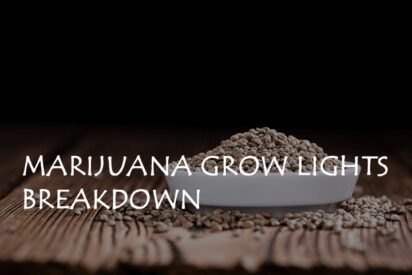
One of the most important pieces of equipment for any indoor marijuana grow area is light. Most outdoor cannabis cultivating setups no longer require additional lighting fixtures. Your plants can already bask under the light and heat of the sun’s warm rays. However, indoor strains don’t have easy access to this natural source.
Instead, you should focus on getting your marijuan grow lights for your indoor plants. There are different lights to choose from the market to help your marijuana strains acquire the light and heat they need. Always remember that light is a crucial element to your pot.
The Importance of Light in Growing Marijuana
The absence of light means plants cannot photosynthesize. No light means most plants, including marijuana strains, will eventually die. However, there are some cannabis strains not suitable for growing outdoors because of a number of reasons. Indoor growing areas may be the key to a successful yield which requires the use of the right grow lights.
Aside from photosynthesis, light also plays a key role in keeping plants healthy during their vegetative stages. This element also forces your plants to flower when ready. Most cannabis strains are photoperiodic which means they require a set period of uninterrupted light and darkness. For example, many marijuana plants require 12 hours of continuous light and another 12 hours of darkness.
Factors to Consider When Buying Grow Lights for Marijuana
Indoor marijuana grow areas have an absence of natural sunlight. Grow lights play a vital role in providing light and heat to your plants. Light is an essential element for most plants as it helps bring about photosynthesis. It’s the process in which carbon dioxide, water, and light combine to become energy sources for plants.
Consider the following when looking for the best grow light for your needs:
Light Intensity
The figure connected to this factor determines the brightness of the grow light. Plants absorb light energy from grow lights. Growers can measure the light intensity by seeing the Lumen rating of the piece of marijuana-growing equipment.
There are low-intensity lights on the market that help produce long and leggy plants. Since these lights provide low light outputs, plants need to reach high to find that adequate amount of light. Conversely, high-intensity lights are superior for many cannabis strains because of the devices’ ability to produce denser, more compact, and higher yielding buds.
Some lighting fixtures allow users to control the intensity of the light on the fly. Many inexpensive grow lights present a “What You See is What You Get” nature which means the light intensity is unchangeable from the start. To get the best results for your harvest, you may want grow lights that are capable of delivering flexible light intensities to help you cultivate a broad range of indoor weed. Be prepared to spend more cash than you should when you opt for this path.
Grow Light Cycle
Expert marijuana growers know that the development stages of plant growth require longer light durations than flowering stages. Many cannabis cultivators don’t have the luxury of time to constantly maintain their plants. The good news is that there are grow lights that have built-in timers for light cycles. These pieces of equipment will automatically turn on or off during set intervals. However, the more basic and cheaper models still need a separate timer and human interaction for these units to function in the best way possible.
Color
Novice marijuana gardeners may think that the color of the light emitted from grow lights is an insignificant trait. Take note that plants, especially cannabis need more blue light during their vegetative stages. Your plants will then need more red light when they begin to flower. The different colors offer varying benefits to plants. Blue light waves have smaller light waves than red light which allow the lighting fixture to give more energy. Red light waves deliver a longer reach than blue lights but have a lesser energy output.
To give you great value for money, you may want to use full-spectrum grow lights. These models may cost more than traditional models but will help save you cash in the long run.
Marijuana Grow Light Choices
This section helps you determine which grow light to use for your marijuana grow area. We discuss the pros and cons along with other useful information.
LED Grow Lights
Light Emitting Diode (LED) grow lights are relatively new on the market. It’s not a favorite choice for everyone because of their price tags. The initial cost of getting a bunch of these lighting fixtures can puncture holes in wallets. Regardless of their prices, many growers still prefer using LED lights.
LED grow lights for weed are very easy to set up and install. There are small models on the market that have a plug-and-play nature. In other words, all you have to do is connect it to an appropriate wall socket and it’s good to go. When beaming light to a compatible cannabis strain, LED lighting fixtures can help produce great yields.
Also, LED lights don’t run the risk of getting very hot. If you’re running a commercial marijuana farm, then you may still need to set up exhaust fans in the area. These additional pieces of equipment help organize airflow and temperature.
If you’re going to use LEDs, make sure the light has enough distance away from your plants. This step is necessary to prevent light burn. LEDs with green and white light should be a necessity for a full spectrum. Blue and red light colors for LED fixtures may not be enough.
Let’s take a look at the pros and cons of LED grow lights:
| Pros | Cons |
| Low running temperature.Energy efficient. Extended lifespan. | High initial costs. Weak light intensity. May require additional units from the start. |
Fluorescent Grow Lights
There are two types of fluorescent marijuana grow lights: CFL and T5. CFL tend to have twisted shapes whereas T5 grow lights are your industry standard long and narrow lighting fixtures.
Fluorescent lights produce warm and cool light intensities and they deliver a full spectrum of colors regardless of their shape. These models are also cheaper than most grow lights on the market. Some marijuana growers may even use these lights to help with standard living environments. Also, you don’t need special sockets for these models.
Are fluorescent grow lights the best for cultivating cannabis strains? These lighting fixtures may serve a great purpose for many marijuana growing areas, but these units are still far from the best. Perhaps the main drawback of using these lights is their weak penetrating power. Also, fluorescent lighting tends to produce smaller yields when looking at their light intensity per watt as compared to LED and HID lights.
Also, fluorescent lights require the right positioning as these models need to be very close to your plants to become effective. These grow lights aren’t recommended for use when trying to grow tall, full-sized cannabis strains. Fluorescent also has a small amount of mercury so keep that in mind when deciding to use these lighting fixtures.
Let’s check the different pros and cons of using fluorescent grow lights:
| Pros | Cons |
| Low initial costs. Great for low-stress training. A cool temperature for some cannabis strains.An excellent choice for novice gardeners. Extended lifespan. | May produce smaller yields. Weak light intensity. Short light travel. Not ideal for large growing areas. |
High-Intensity Discharge (HID) Grow Lights
Using HID grow lights allows growers to use lighting fixtures that are one step above fluorescent lights. Also, many marijuana growers prefer HID lights among all the other grow lights out there. Despite their awkward shapes, these lights offer an abundant array of benefits to plants. HID lights should also be used in conjunction with a reflector hood to position the light beam to plants.
Perhaps the main disadvantage of HID grow lights is their extreme heat. These lights run the tendency of being very hot. Exhaust fans are a dire need when planning to go this route in giving heat and light to marijuana plants.
Aside from ventilation and temperature control, HIDs may also require stands or other structures to be steady. Ballasts may also be a requirement to mediate electric currents. It may seem like the initial costs of owning a set of HID grow lights are high, they’re cheaper than buying a bunch of LEDs. Still, HID lights do require more expenses in other ways. HIDs also have a lower lifespan as compared to LEDs or fluorescent lights.
There are three types of HID lighting: High-Pressure Sodium (HPS), Metal Halide (MH), and Ceramic Metal Halide (CMH). CMH lights, also known as Light Emitting Ceramic (LEC) models, are more efficient than industry standard MH lights. Still, MH lights have blue hues great for the development stages of marijuana plants. HPS, on the other hand, have yellow lighting ideal for the flowering stages of your cannabis strains.
Now, see the different pros and cons of using HID grow lights:
| Pros | Cons |
| Operational costs get lower in the long run.Usable light is better than fluorescent lights. Many HIDs are dimmable. | High heat. Requires reflectors, ballasts, and structures. May require additional tools for installation. |
How to Know the Right Amount of Light Needed for a Grow Area
After your cannabis plants finish their seedling phases they will enter their development or vegetative stages. At this time, your cannabis strains require at least 250 watts per square meter of light for them to grow properly. To enable bigger and faster growth, growers may need to exceed the amount. You may provide your plants with 400 to 600 watts per square meter of light. Some growers may even consider bringing it to the maximum by installing 1000 watts of grow light per square meter. However, the last option may not be for everyone as it requires high initial costs.
Light Placement Tips for Grow Lights
The best arrangement for any grow light is to hang or place them directly on top of your cannabis strains. This position mimics the natural sunlight beaming down to your plants. Also, this overhead location exposes all the sides and leaves to the heat and intensity of the light.
As a rule of thumb, grow light bulbs that use incandescent lighting should be at least 23 inches above your plants. Fluorescent and LEDs, on the other hand, provide lower heat signatures than other grow lights. Hence, both of these lighting fixtures should be about 6 to 12 inches over plants.
Keep a close eye on the growth of your indoor strains during their development stages. You may need to adjust the grow lights at certain intervals to help provide a high amount of yield by harvest time. Consult your chosen grow light for its design and other specifics to help you gain the best results.
How Long Should the Grow Lights Remain Operational?
Novice marijuana growers may make the mistake of running their grow lights with a 24-hour operation. Most cannabis strains require a photoperiod of 12 hours of light and 12 hours of darkness. Don’t disregard darkness as a bad element for growing plants. Your strains break the acquired photosynthesized energies at night through a process known as respiration.
Remember, different strains may require varying photoperiods. Some flowering plants may require 16 hours of light and 8 hours of darkness. There are also cannabis strains that only need 8 hours of light and 16 hours of darkness. Always do your research before leaving the light on your grow area.
You need to use the best grow lights for your preferred indoor marijuana strain. Don’t just place any random lighting fixture on top of your plants in hopes of acquiring a high amount of yield come harvest time. Not all light can provide promising results. We hope that by reading through our guide you now have a clearer idea than before as to what type of grow light to buy and use.

In recent years, the discourse surrounding secondhand marijuana smoke has gained significant attention, paralleling the legalization and increas

In the realm of cannabis culture, the practice of "wake and bake" holds a significant place, accompanied by both supporters and skeptics. As exp

Introducing the robust indica strain known as Critical Mass weed, a harmonious fusion of Afghani and Skunk #1 genetics. Delve into its essence,
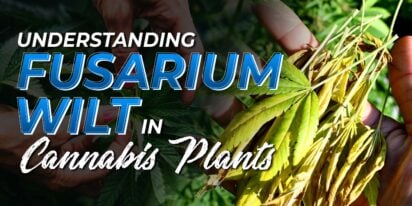
Fusarium wilt cannabis represents a significant threat to cannabis cultivation, necessitating a comprehensive understanding of its intricacies.

1980s were a time of profound cultural transformation, marked by iconic fashion, music, and movies. Alongside these trends, a unique facet of '8
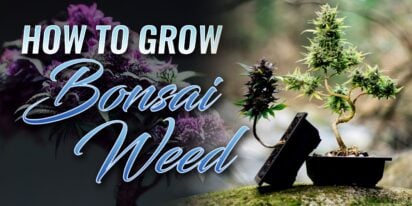
[ez-toc] In the deep history of cannabis cultivation, there exists a captivating and creative practice that combines the art of cultivation wit

For growers looking to get better yields and healthier cannabis plants, it's important to understand and control the cannabis soil pH levels. pH
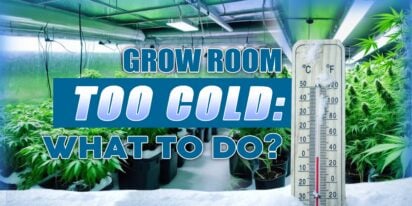
[ez-toc] In indoor gardening, maintaining an optimal temperature within your grow tent is crucial for the health and productivity of your plant

[ez-toc] Welcome to the delightful world of cannafudge crafting, where sweetness meets sophistication, and cannabis infusion adds a unique twis
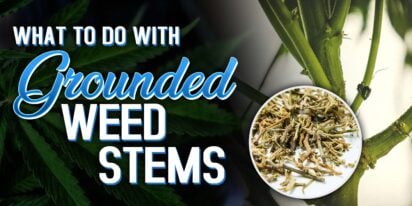
[ez-toc] You’ve finished trimming your weed, but what about those leftover stems? Don’t throw them away! These seemingly useless bits can a

Are You 18 Or Over?
YesOr
No By clicking yes, you certify that you are over 18. By using this website, you agree to our legal disclaimer.